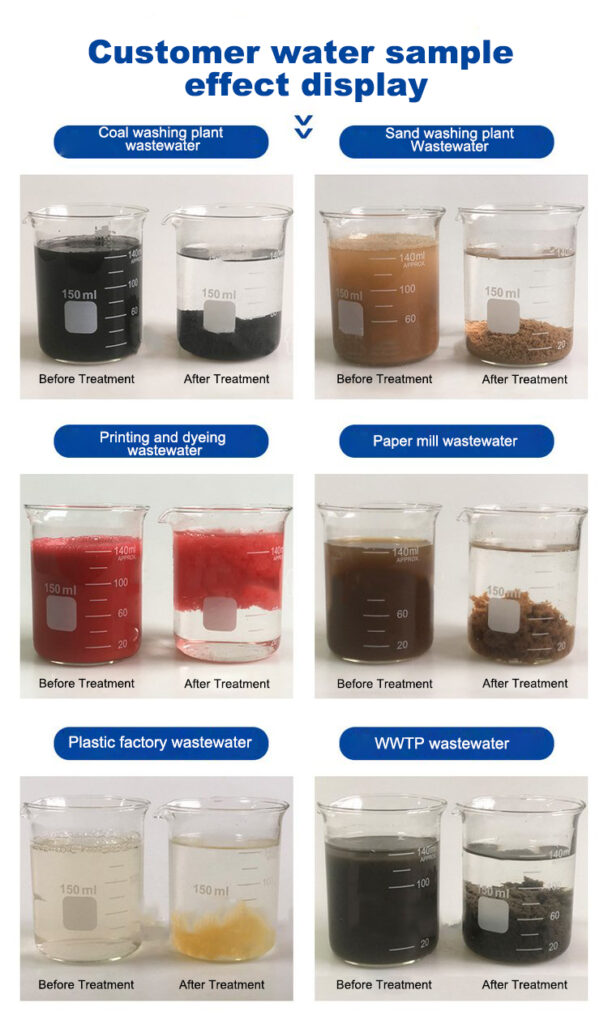In the field of wastewater treatment, PAC (polyaluminum chloride) and PAM (polyacrylamide) are two indispensable chemical reagents, each playing their own role and working together to improve water quality. Then, How do they work? What are the advantages and application areas? Let’s take a look.
In Wastewater treatment:
PAC acts as a coagulant to condense pollutants through electrical neutralization and adsorption;
PAM acts as a flocculant to to accelerate sedimentation by forming large flocs through bridging action.
Core Function Analysis:
1. The mechanism of action of PAC
* Neutralization effect: After hydrolysis, a positively charged hydroxy aluminum polymer is produced, which neutralizes the negative charge on the surface of colloidal particles, reduces repulsion, and causes particles to aggregate into small flocs.
* Adsorption bridging: Connecting multiple particles through a polymer chain structure to form a network structure that envelops pollutants and accelerates precipitation.
* Applicable scenarios:
—Drinking water treatment (removal of suspended solids, bacteria, etc.);
—Removal of COD, BOD, and heavy metal ions from industrial wastewater (such as printing and dyeing, chemical wastewater).
2. The mechanism of action of PAM
- Adsorption bridging: Long chain molecules adsorb multiple particles, forming large and dense flocs (“alum flowers”), significantly increasing sedimentation rate.
- Net capture and sweeping: High concentration PAM forms a network structure to directly capture suspended particles, enhancing separation efficiency.
- Applicable scenarios:
- Sludge dewatering (reducing the moisture content of the sludge cake);
- Collaborative treatment of complex water quality (high turbidity, high organic wastewater).
Synergistic effects and practical advantages
- Complementary and efficient:
- Step by step processing: PAC first neutralizes the charge, PAM then bridges the flocs to form more stable large particles.
- Cost optimization: Combined use can reduce PAC dosage and lower overall drug costs.
- Typical applications:
Enhanced treatment of primary/secondary sedimentation tanks in sewage treatment plants;
Efficient purification of industrial wastewater (oily, papermaking, electroplating wastewater).
Example: When treating printing and dyeing wastewater, PAC is first added to stabilize and coagulate the dye particles, and then PAM is added to form dense flocs. The settling speed can be increased several times, and the sludge dewatering efficiency can be increased by more than 50%.


2.jpg)
生化膜反应器12-scaled.jpg)



